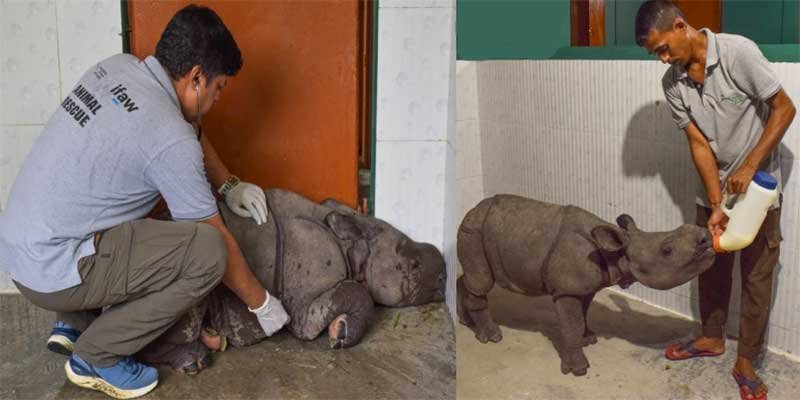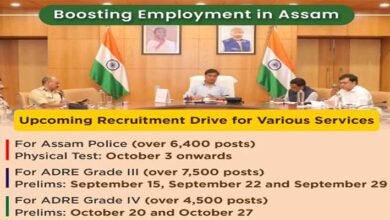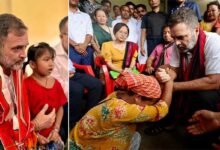Assam: WTI brings new hope for orphaned Rhino calf at the CWRC in Kaziranga
The calf was in quarantine before being released into a dedicated rhino paddock at the centre, coinciding with World Rhino Day celebrations.

GUWAHATI- An orphaned one-horned Rhino calf was recently admitted to the Centre for Wildlife Rehabilitation and Conservation (CWRC) and was was in quarantine, released into a dedicated rhino paddock at the centre, coinciding with World Rhino Day celebrations. CWRC is jointly run by the Wildlife Trust of India (WTI), Assam Forest Department & IFAW in Assam’s Kaziranga.
A female baby rhino aged between two and three months was rescued by the Assam forest department from Pobitora Wildlife Sanctuary and handed over to CWRC on 15th September. The calf was found alone and it is suspected that the mother had died near the Haduk beel (lake) area of Pobitora WLS.
World Rhino Day: Saving the unicornis: A triumph over organized crime and a beacon of hope
The team from the forest department had been monitoring the calf for 10 days and reported that she was trying her best to be in the company of other lactating mothers in that area, but wasn’t successful.
The calf had since been on its own and was consequently highly emaciated and starved. Consequently, they planned for the rescue and handed over the calf to CWRC, Kaziranga with due permission from the Chief Wildlife Warden. On being admitted to the centre, it also showed acute signs of dehydration.
Dr. Samshul Ali, the centre head at CWRC said “It’s a miracle that the calf had survived this long”. Right after admission to the centre, the calf was fed formula milk which it readily accepted. “The team waited for a few days for the animal’s condition to be stable for doing the necessary blood tests before being released into the rhino paddock”, adds Dr. Samshul. On the occasion of World Rhino Day, the calf will join two other rhinos which were admitted to the centre in similar conditions.
Mr. Arun Vignesh Sridharan, Divisional Forest Officer, said “We highly appreciate CWRC’s effort in re-wilding rescued animals, especially young calves such as this. Thanks to the highly dedicated team and a top-notch veterinary facility, these young animals have a second chance at life”.
The Indian rhinoceros is listed as a “vulnerable” species by the IUCN Red List, with less than 3000 remaining in the wilderness of India and Nepal. World Rhino Day 2023 is themed on “Five Rhino Species Forever” and such re-wildling efforts go a long way in ensuring the survival of this unique animal.
Mrs. Sonali Ghosh, IFS, Field Director of the Kaziranga National Park said, “Glad to note that the rhino calf rescued from Pobitora is stable and getting a second lease of life at CWRC. We aim to release her back into the wild when she is independent enough to fend for herself.”
Mr. Nayan Jyoti Das, Range Forest Officer, Pobitora WLS, “My team took care of the calf during its short stay in the range as well as during its transport to the rescue centre. It is reassuring to see that the rhino is in a safe environment in the absence of its mother. I would like to thank everyone involved in the rescue and especially the CWRC team for ensuring its well-being.”
Assam: Aaranyak loses K9 squad’s prized possession Sheela
CWRC is a joint venture between WTI, the International Fund for Animal Welfare (IFAW) and the Assam Forest Department. Led by Dr. Samshul, the dedicated team of vets and keepers have successfully hand-raised young animals and prepared them to be released back into the wild.
Since its inception in 2002, CWRC has admitted 54 rhino calves, of which more than 42% have been successfully released back into the wild. Ganga, a rhino calf that was hand-raised by the team was released in Manas National Park in November 2008. She has now become the founder stock of two generations of rhinos in the landscape, showing the success of the rewilding process.











